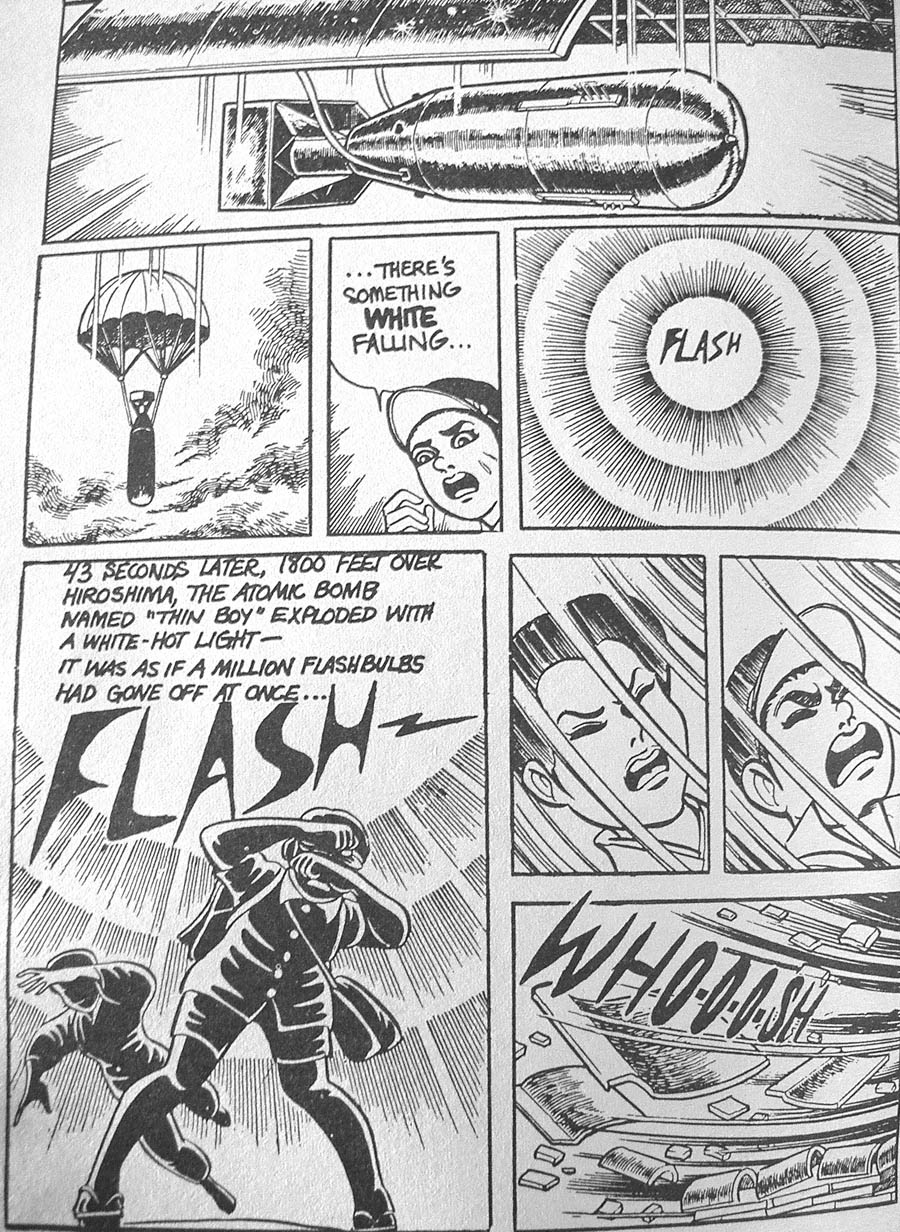
I thought, since it's that anniversary, that I would share one of my favorite graphic experiences with whoever visits this site. When I was significantly younger than I am today, I discovered Speigelman and Sacco, but my favorite discovery was Keiji Nakazawa. His Barefoot Gen rocked my world.
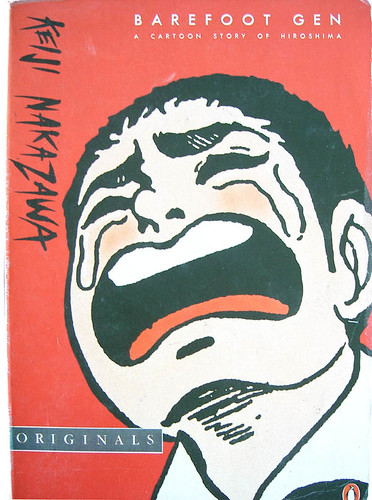
[Barefoot Gen (UK: Penguin, 1987)]
Barefoot Gen is a Japanese manga about Hiroshima, drawn and written by a man who had lived through it and was determined to make his fellow countrymen think about what had happened.
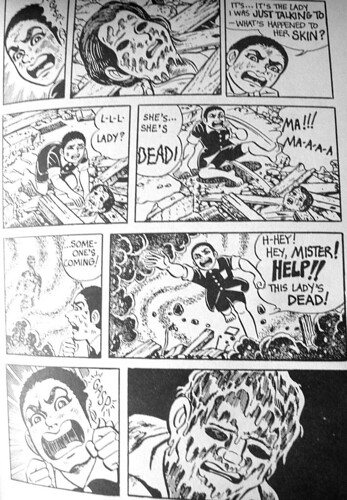
According to the introduction of my edition, it was first serialised in 1972 in a comic magazine with a circulation of over two million. Apparently it has been made into a full-length animated film, but I haven't managed to catch that yet. The story has, over the last fifteen years or so, been translated into English by a group called Project Gen. I've collected all four of the volumes: Barefoot Gen (above),
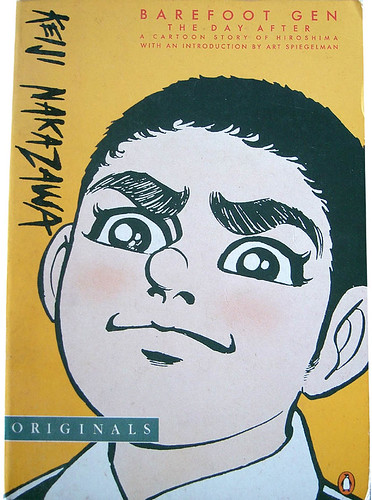
Barefoot Gen: The Day After (UK: Panguin, 1988),
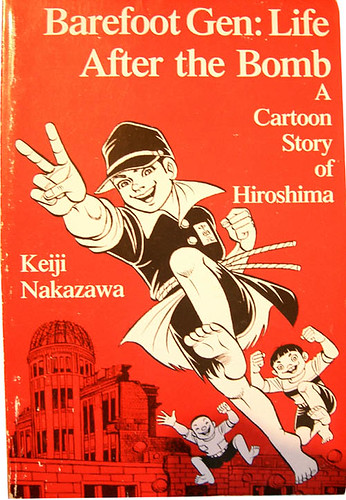
Barefoot Gen: Life After the Bomb (Philadelphia: New Society Publishers, 1989),
and
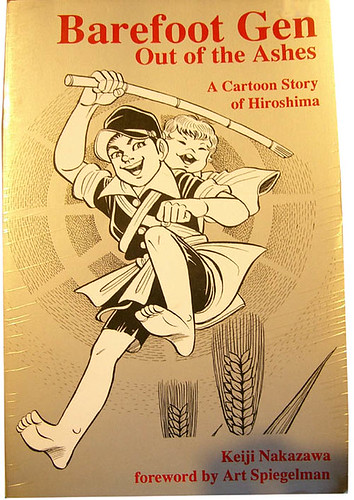
Barefoot Gen: Our of the Ashes (Philadelphia: New Society Publishers, 1994)
If you have teenage children, I really recommend these stories. They don't preach or moralise, and they present the facts very clearly. He also goes into the structure of the Japanese family pre- and during the war, and has a hard clear look at the militaristic nature of Japanese society. Gen has a big brother fighting for Japan. He is forced to watch his younger siblings die in the firestorm after the bomb drops, and he witnesses his mother's mental deterioration and death. He then has to look after his infant sister through the whole ordeal. For added political interest, there is a Korean neighbour, who allows Nakazawa to explore the troubled Japan-Korean relationship.
This must have been terribly confronting stuff to post-war readers; Nakazawa wrote it because he was distressed to find that twenty years after the war most students knew nothing about the atomic bombs and many teachers were also too young to know anything. Drawing these images must have been like pulling out his fingernails, or picking at scabs. But he did it, and the books have made a huge impact.
I pick them up every few years to read; they stayed burned in my brain in between times. Together with John Hershey's Hiroshima essay, these are mandatory reading for anyone who wants to know what it was like to be in or around Hiroshima when the bomb dropped.
PS After I wrote this, we turned on the radio to find Radio National's The Night Air was featuring Underground Comics and Manga. It was great. Funnily, the website doesn't mention it at all, concentrating on last week and next week's show. If you can catch the repeat of the comic show, it's aurally over-stimulating, but inbetween all the effects are some good comments on comics by those creating them, including some Australian artists.
2 comments:
Great post. Never heard of that comic, but will look out for it.
Ditto that. I've never got into anime or manga, but this sounds pretty interesting.
Post a Comment